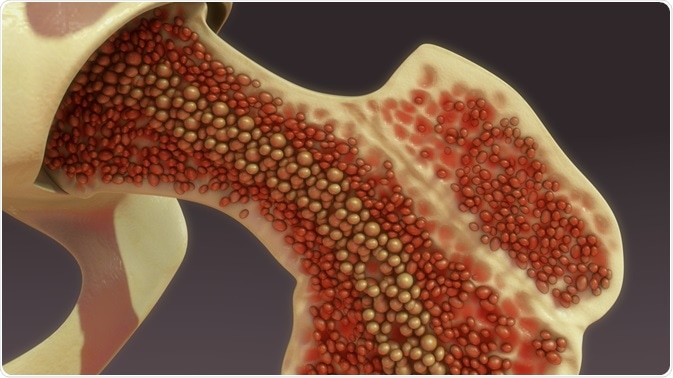Dyskeratosis congenita (DC) is a rare form of bone marrow failure, where the bone marrow fails to produce enough blood cells. This condition is therefore usually diagnosed based on a low number of circulating red blood cells (RBCs), white blood cells (WBCs), and platelets.

Image Credit: sciencepics / Shutterstock.com
Telomere biology and DC
The exact prevalence of DC is not known, although it is estimated to affect around one in 1 million people.
In about half of the people affected, the illness is caused by mutations in the TERC, TERT, DKC1, or TINF2 genes. These genes code for the proteins telomerase, dyskerin, and shelterin, which are required for the maintenance of important structures called telomeres. Telomerase helps to maintain the length of telomeres by adding small DNA segments to the ends of chromosomes when cell division occurs.
Dyskeratosis congenita (DC) and Telomere Biology
The main telomerase components, hTR and hTERT, are coded for by TERC and TERT, respectively. The hTR part is a molecule of ribonucleic acid (RNA) that acts as a template to create the DNA segments, which then get added to the chromosome ends by the hTERT component. The role of the DKC1 gene is to code for the protein dyskerin, which binds to hTR to help maintain the stability of the telomerase complex.
The TINF2 gene codes for a protein found in the shelterin complex, which protects telomeres during DNA repair. In the absence of shelterin, the chromosome ends would be picked up as abnormal breaks in the sequence of DNA and the repair mechanism would involve these ends being joined together or apoptosis is induced. Mutations that arise in the TERC, TERT, DKC1, or TINF2 genes, therefore, disrupt the maintenance of telomeres, which become reduced in length.
Symptoms
Cells that divide rapidly are the most affected by the presence of short telomeres. As a result, people with this condition usually develop disorders of the skin, bone marrow, oral mucosa, nail beds, and hair follicles. Chromosomal instability due to impaired telomere maintenance may also give rise to genetic abnormalities that cause uncontrolled cell division, thereby increasing the risk of malignancy in individuals with DC.
DC can also be characterized by oral leukoplakia, hyperpigmentation of the skin, and nail dystrophy. Additional features of this condition include:
- Lung disease
- Gut disorders
- Infertility
- Osteoporosis
- Eye and tooth abnormalities
- Developmental delay
Inheritance
This disorder generally affects men much more frequently than females because, in the majority of cases, the mode of inheritance is X-linked recessive. This means that the gene mutation that causes the condition is located on the X chromosome.
In males, the mutation would only need to occur on the one X chromosome they possess, whereas in females, the mutation would need to occur on both of their X chromosomes. Since it is unlikely that women will inherit two mutated copies of this gene, males are affected by this condition much more frequently than women.
Although X-linked recessive is the most common inheritance pattern for DC, studies have also found both autosomal recessive and autosomal dominant patterns of inheritance to be involved in the inheritance of this condition.
References
Further Reading
Last Updated: May 18, 2023